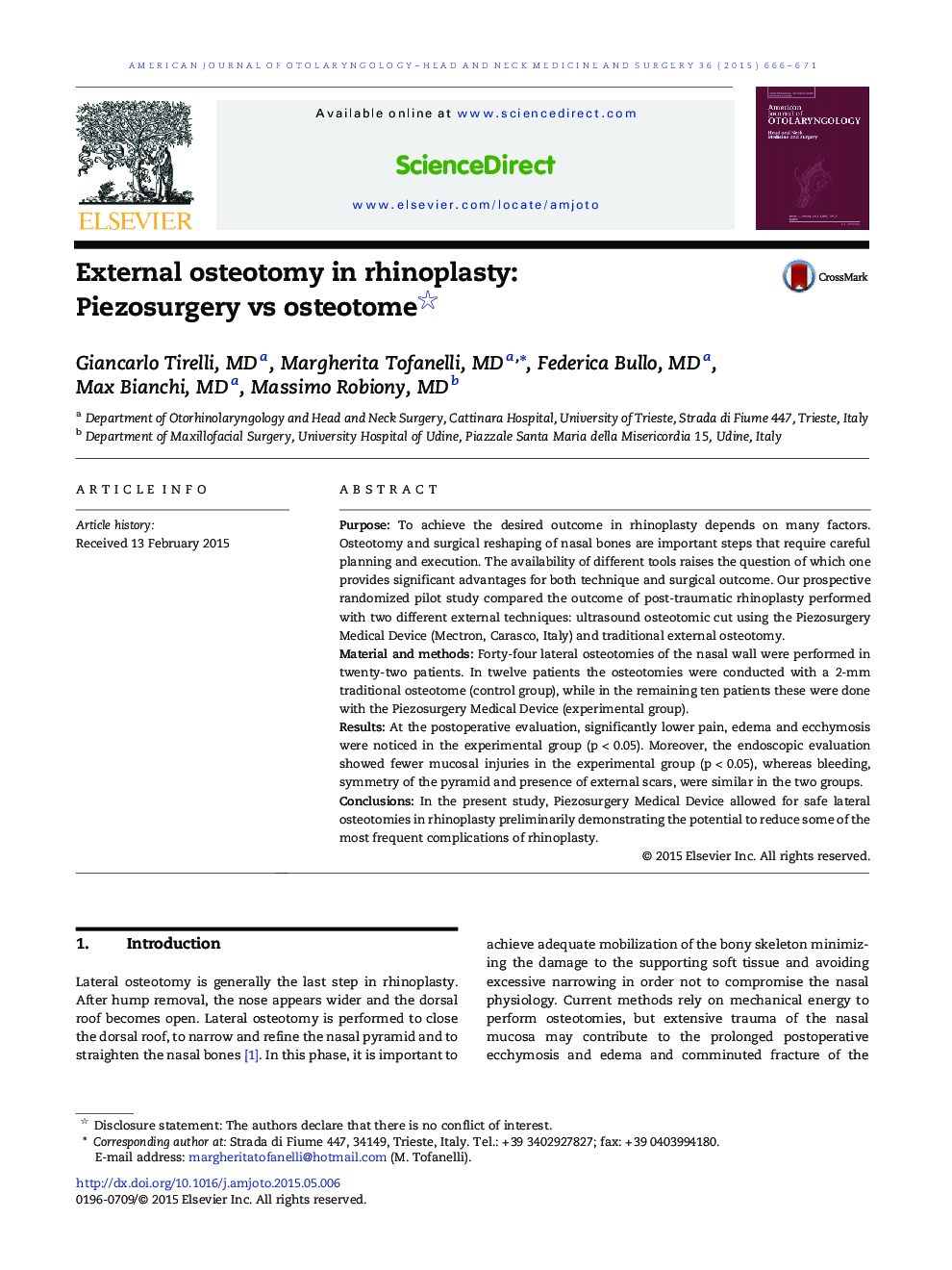| Article ID | Journal | Published Year | Pages | File Type |
|---|---|---|---|---|
| 4103060 | American Journal of Otolaryngology | 2015 | 6 Pages |
PurposeTo achieve the desired outcome in rhinoplasty depends on many factors. Osteotomy and surgical reshaping of nasal bones are important steps that require careful planning and execution. The availability of different tools raises the question of which one provides significant advantages for both technique and surgical outcome. Our prospective randomized pilot study compared the outcome of post-traumatic rhinoplasty performed with two different external techniques: ultrasound osteotomic cut using the Piezosurgery Medical Device (Mectron, Carasco, Italy) and traditional external osteotomy.Material and methodsForty-four lateral osteotomies of the nasal wall were performed in twenty-two patients. In twelve patients the osteotomies were conducted with a 2-mm traditional osteotome (control group), while in the remaining ten patients these were done with the Piezosurgery Medical Device (experimental group).ResultsAt the postoperative evaluation, significantly lower pain, edema and ecchymosis were noticed in the experimental group (p < 0.05). Moreover, the endoscopic evaluation showed fewer mucosal injuries in the experimental group (p < 0.05), whereas bleeding, symmetry of the pyramid and presence of external scars, were similar in the two groups.ConclusionsIn the present study, Piezosurgery Medical Device allowed for safe lateral osteotomies in rhinoplasty preliminarily demonstrating the potential to reduce some of the most frequent complications of rhinoplasty.
